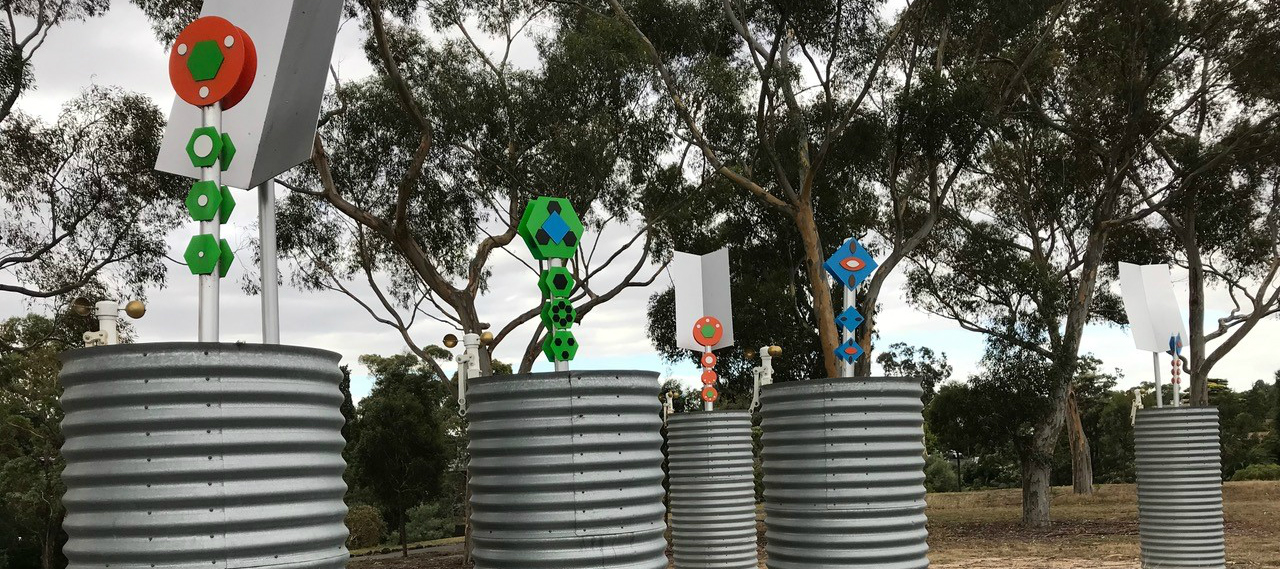Spotlight on Drop Zone: an artwork by Troy Innocent, Joel Collins, Indae Hwang, Yun Tae Nam
Wednesday 07 March 2018

Drop Zone by Troy Innocent, Joel Collins, Indae Hwang and Yun Tae Nam was one of three public art works installed in Yarra, in 2011, under the banner of The Environmental Public Arts Project which responded to key features of Council's Environment Strategy: Towards Local Sustainability 2008-2020.
The aims of this project included activating public spaces in new and creative ways through the creation of artworks which would act as catalysts for further engagement and discussion around environmental themes and issues.
Located on Swan Street near the intersection of Yarra Boulevard in Burnley, the artwork, Drop Zone, is set in an imagined future where decreasing water availability has affected us more dramatically than anyone predicted. The water shortage has become so severe that we have to access water on a first-come first-serve basis, from military-like water ‘drop zones’, like this one, made from modified rain water tanks.
These tanks function on three levels: Collected rain water causes the totem sculptures to rise and bloom; evaporation causes the totem sculptures to fall; and an anemometer (device that measures wind speed) drives a process that plays the tank like a giant drum, tuned by the amount of water contained within.
Many environmental reports discuss the increasing scarcity of fresh water around the world. In 1955 the UN had three countries listed as ‘Water Scarce’, by 1990 thirteen additional countries were on the list, and by 2025 a further ten are expected to join those. These locations are all UN recognised flash points for potential conflict over water resources.
This artwork envisions a future for Australia where the impact of decreasing water availability has had a more dramatic effect than any of the predictions. The shortage is so severe that military-like water ‘drop zones’, constructed of modified rainfall storage tanks have been established across the public parks of the City of Yarra for access on a first come, first serve basis. However, as the water is only replenished through rain catchment the tanks may only offer infrequent relief for the City of Yarra residents, standing as hollow reminders of the effects of inaction on the shaping of sustainable national water use.
The water tank is becoming a contemporary symbol of the Australian household, much like the Hills Hoist clothesline once was. The work incorporates this identity, using ready-made water tanks arranged on a site marked out as a resource drop zone much like those seen in real time strategy games. Situated within the tanks are small totemic sculptures that float on top of the water within the tank. When the water level is low they are only partially visible; when the water level is high they rise appearing to bloom from the top of the tank. This metaphorical blooming references the appearance of flowers after desert rains; the connection between water and life.
